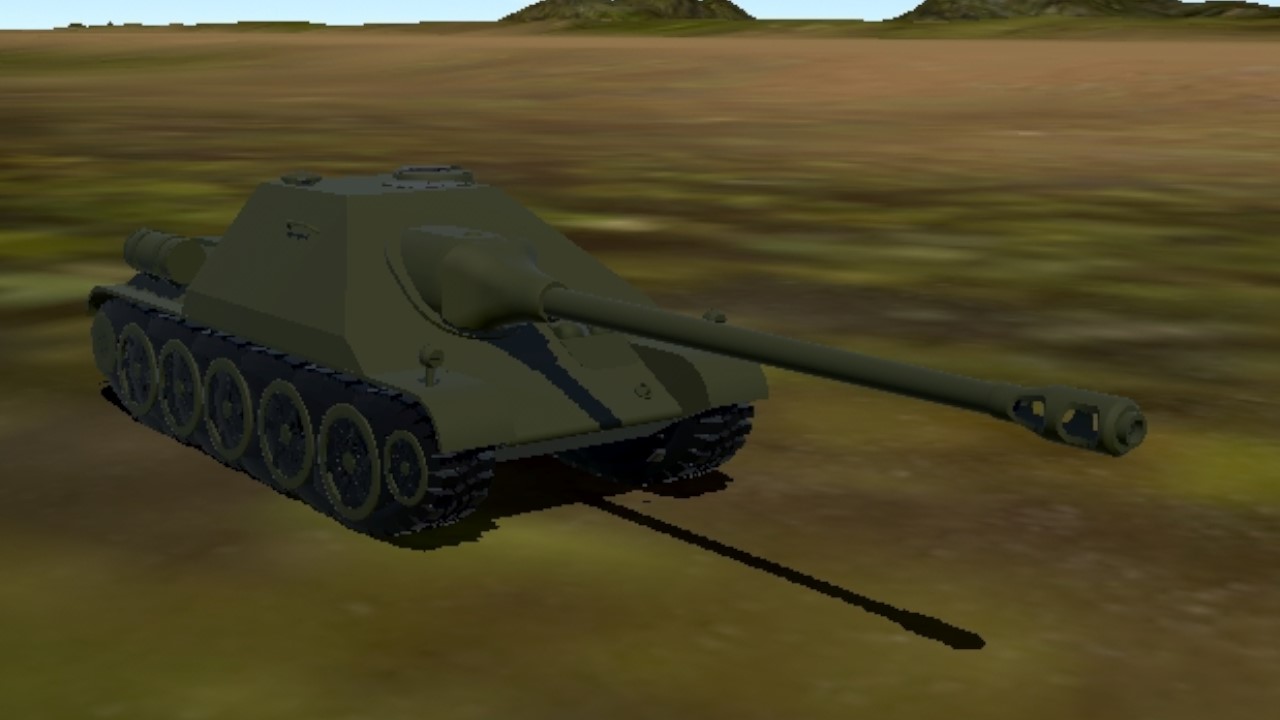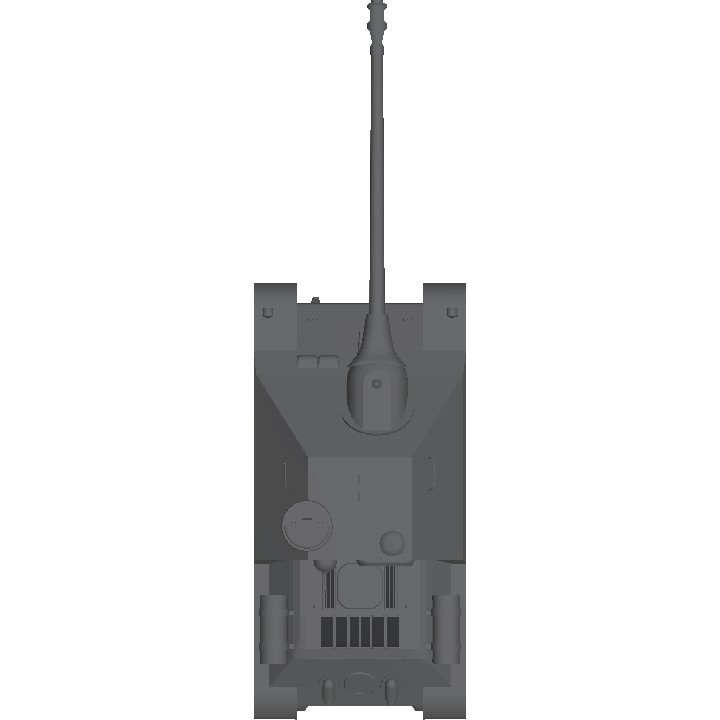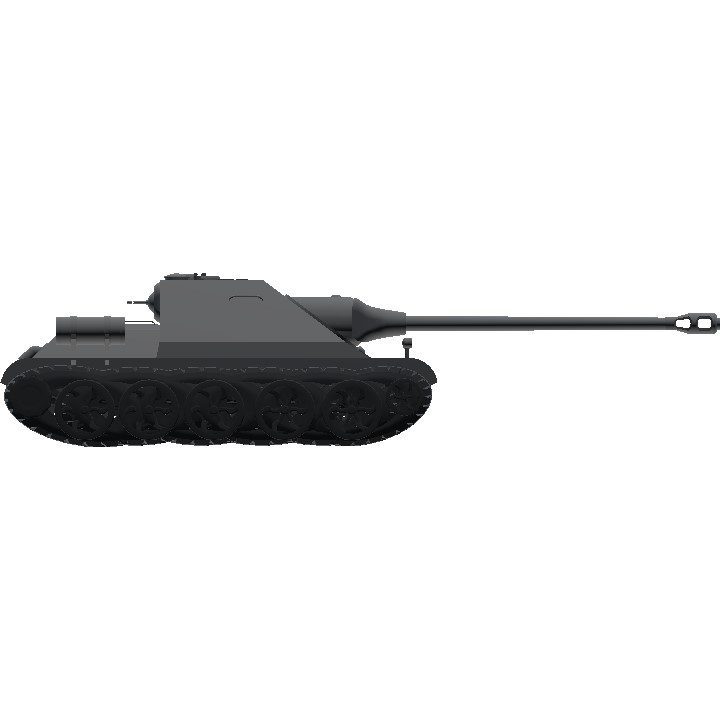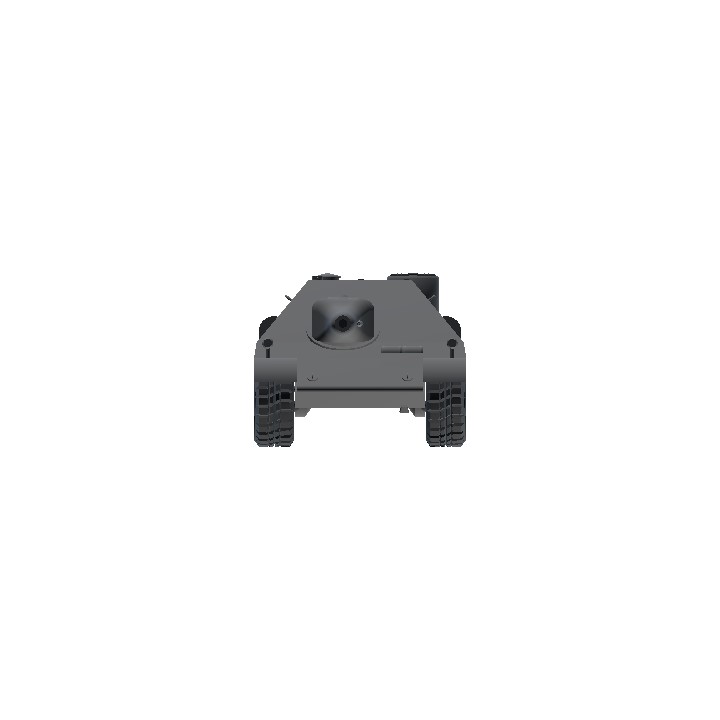Main Description
This tank destroyer is based on the versatile T-34-85 chassis, combining the mobility of a medium tank with the firepower of a heavy tank. The primary weapon is the D-25S 122 mm cannon, known for its devastating firepower, capable of penetrating thick armor and neutralizing heavy enemy tanks. The vehicle features a casemate design, meaning the gun is mounted in a fixed superstructure, offering superior frontal armor but sacrificing turret rotation.
For secondary armament, a DSHK 12.7 mm heavy machine gun is mounted at the loader's position, positioned behind the main hull. This weapon provides protection against infantry and low-flying aircraft but requires the loader to operate it, exposing them to enemy fire.
The tank destroyer's design prioritizes firepower and protection, making it suitable for ambushes or defensive roles. However, the added weight of the gun and superstructure slightly reduces mobility compared to the standard T-34-85.
Development History
During World War II, the Soviet Union sought ways to enhance the T-34's combat potential. Recognizing the effectiveness of self-propelled guns like the SU-100 and ISU-122, Soviet engineers experimented with mounting the D-25S 122 mm cannon—a weapon previously used on heavy tanks such as the IS-2—onto the reliable T-34-85 chassis.
The resulting tank destroyer was designed to fulfill dual roles: engaging heavily armored vehicles at long ranges and providing fire support against fortified positions. By utilizing the T-34-85's proven chassis, production could remain cost-effective and rapid, while the D-25S's immense firepower offered a substantial advantage on the battlefield.
The fixed casemate structure allowed for thicker frontal armor, enhancing survivability in direct confrontations. However, the design faced challenges such as reduced mobility due to the increased weight and the lack of a rotating turret, limiting its flexibility in dynamic combat scenarios.
Service History
While this design was theoretically capable of bridging the gap between medium tanks and heavy tank destroyers, it likely remained a prototype or was fielded in limited numbers. It would have been deployed in defensive operations, where its strong frontal armor and powerful gun excelled in static or ambush roles. The addition of the DSHK machine gun allowed it to counter threats from enemy infantry or aircraft.
This concept highlights the adaptability of the T-34 platform and reflects the Soviet Union’s ability to repurpose existing resources to meet evolving battlefield demands. While not a widely produced vehicle, this tank destroyer represents a unique fusion of mobility, firepower, and practicality.
Controls/credits in instructions.
Have fun!
Variants
ISU-120 (COMING SOON)
Specifications
Spotlights
- WritersCrusadersAirCo2 11 months ago
General Characteristics
- Predecessor T-34 85
- Created On Android
- Wingspan 10.3ft (3.1m)
- Length 34.2ft (10.4m)
- Height 8.3ft (2.5m)
- Empty Weight 19,882lbs (9,018kg)
- Loaded Weight 20,442lbs (9,272kg)
Performance
- Wing Loading 60,772.5lbs/ft2 (296,717.5kg/m2)
- Wing Area 0.3ft2 (0.0m2)
- Drag Points 3360
Parts
- Number of Parts 190
- Control Surfaces 0
- Performance Cost 1,106





Fixed version
Tags
@WritersCrusadersAirCo2 @TheUltimatePlaneLover @Pnut
Sneeki breeki tank
Russian bias
Tonkster go brr
Soviet Tutel